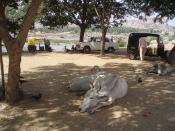The term 'BRIC' was created by economist Jim O'Neill to describe countries that had excellent growth prospects. These four countries were Brazil, Russia, India and China (NZTE, 2011). These countries were identified as developing countries that exhibited strong growth in the past two decades, and that were expected to continue growing and surpass the current economic leaders. It is predicted that by 2030, the BRIC countries will have overtaken the combined GDP of the G7 nations (Daily Beast, 2009) largely driven by an increase in the number of middle class consumers from BRIC countries (NZTE, 2011). "By 2050 it is expected that 50% of the global middle class (defined by the OECD) will be living in India and China", (OECD, 2011).
The rise of the BRIC countries is described as a new era of globalisation because it is expected that they will surpass the current economic leaders (the US and Japan) who have lead the world economy since the 1920's (Economist, 2012).
The BRIC countries are not only increasing their economic presence in the world, but are also wanting to be able to contribute to global decision making (Globalisation101, 2011). Combined, the BRIC countries contribute to 40% of the world's population, and 25% of global GDP (Gobalisation101, 2011). While the current superpower, the US, is expected to decrease its share of the global economy over the next decade, the BRIC countries are expected to continue their growth. Global growth will come from predominantly developing countries, and it is estimated that by 2050, China will be the largest economy, with India coming in third beneath the US (HSBC, 2012). Russia and Brazil are expected to make the top 10 largest economy list.
The two most prominent BRIC countries are China and India. China has the largest population in the world (1.344...


